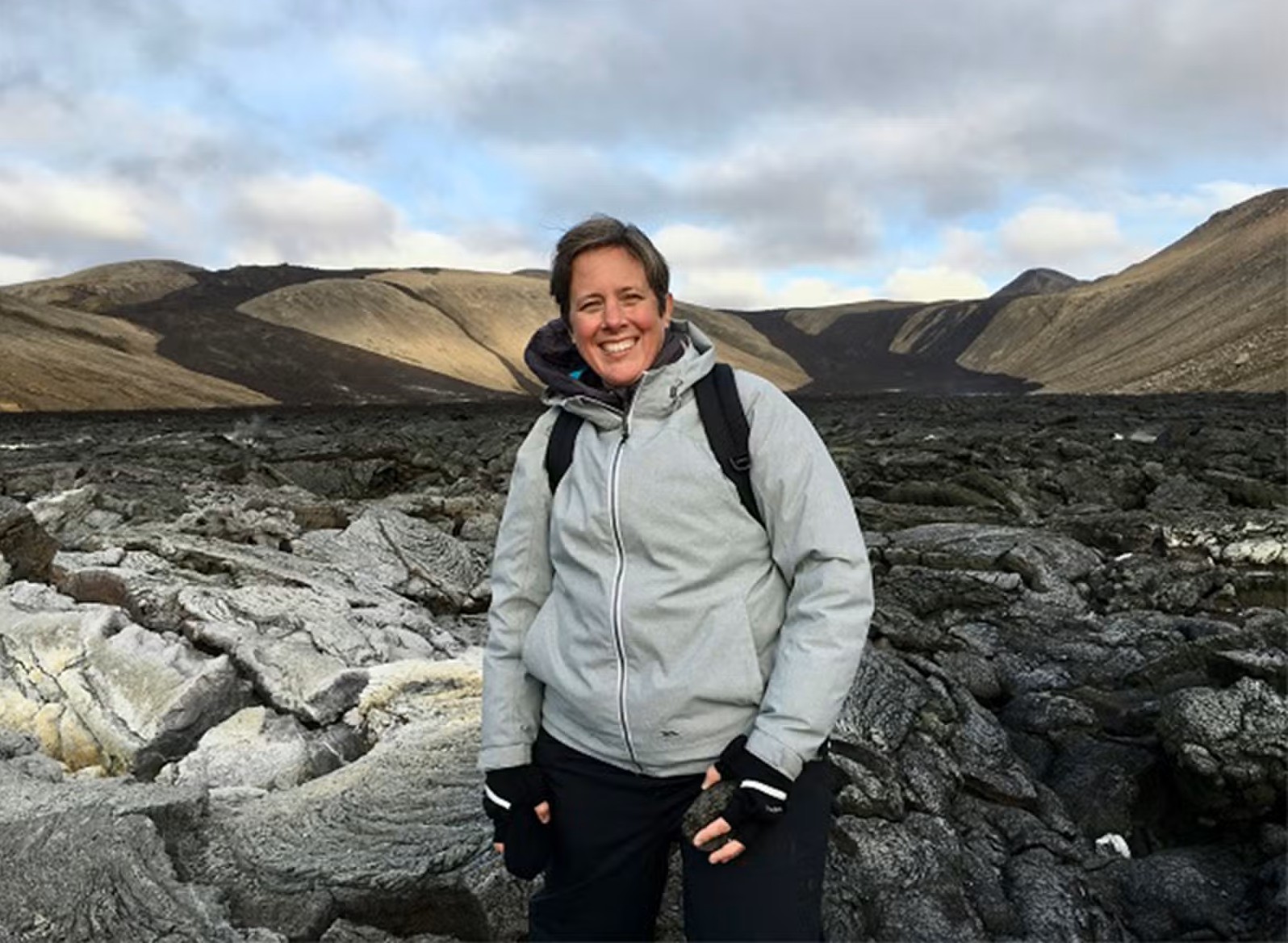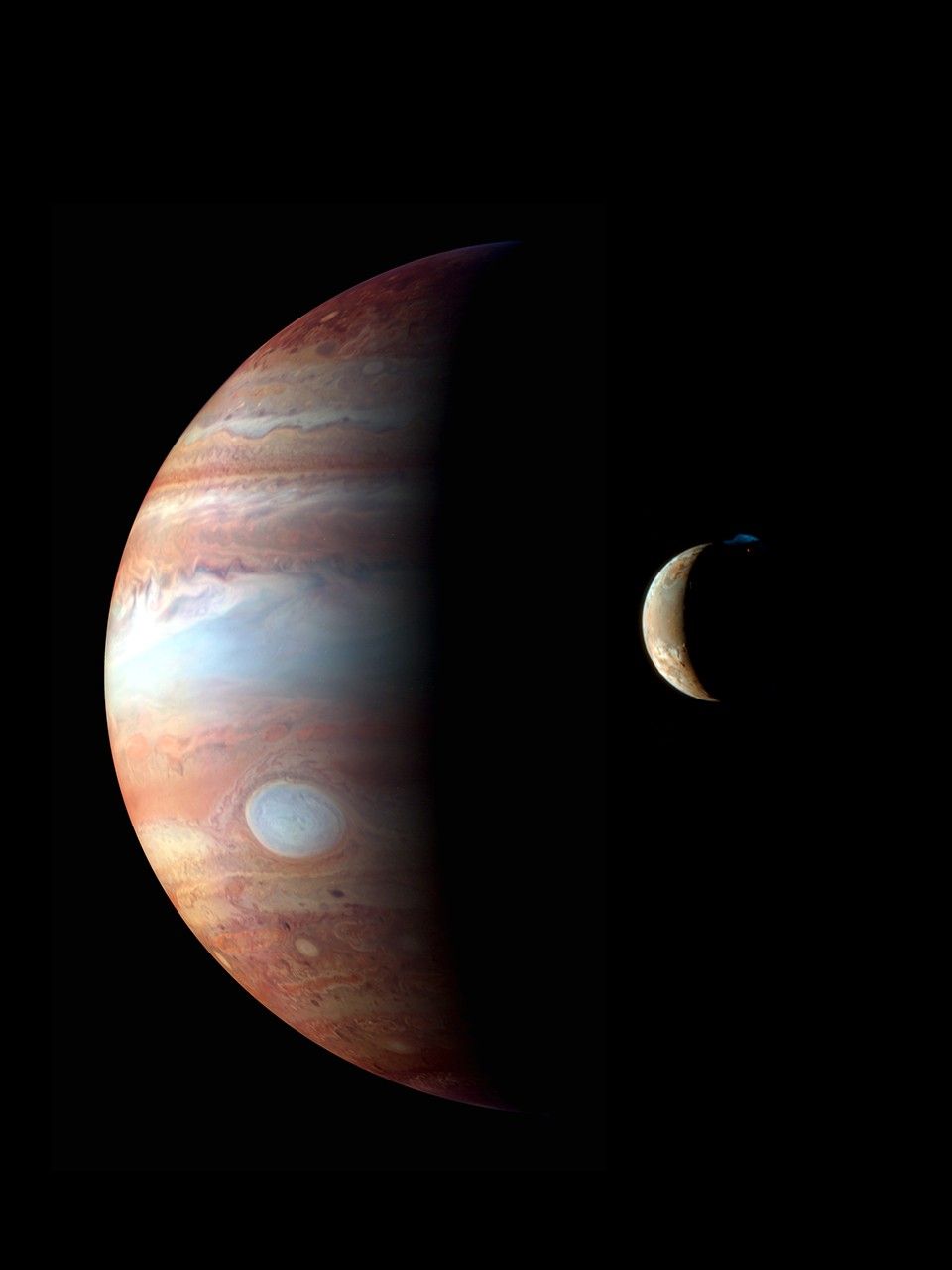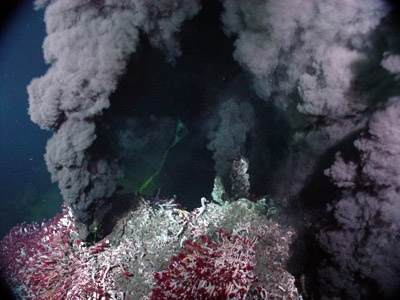I worked in the Atacama Desert for part of my PhD, so I spent just over two weeks living in the higher Atacama. It is an absolutely stunning environment. We were working on a volcano called Lascar that is about 5.5 km in altitude. Climbing up Lascar, we were quite affected by the thin air. At the top of Lascar, about half of the atmosphere's mass is actually below. It feels like the edge of the world in many ways. Looking down over this incredible landscape, one sees a color palette of ochres and rusty colors. It has salty lakes, salars, which are white pans with very blue waters, and the sky is very blue and generally quite clear. It is an incredibly dry place, as the name desert suggests, and a very harsh environment. The sun is very harsh; the air is very dry and thin, and there are many volcanoes. Some of them are ice-capped, and some are venting volcanic fumes — for example, Lascar. The Atacama is one of the places that organizations like NASA have used as analogs for the Mars surface, partly because of the thinner atmosphere (although Mars's atmosphere is far thinner still), the high ultraviolet flux (because it is so high and the skies are so clear), the strange salts there because of the dryness, the aridity, and the salar environments as well. They've done many missions there to test their equipment for various types of Mars expeditions.
Volcanoes and the origins of life
Professor of Earth Sciences
- The moon’s dark maria are immense basaltic lava plains that supplied the first hand-collected extraterrestrial rocks, anchoring our understanding of planetary volcanism.
- Mars’s fixed crust allowed Olympus Mons to grow to the solar system’s largest volcano, illustrating how the absence of plate tectonics can magnify volcanic scale.
- Io’s intense tidal squeezing by Jupiter drives constant eruptions, proving that gravitational flexing can power volcanism without significant internal heat.
- Monitoring volcanic gases on planets and exoplanets may uncover active geology and atmospheric clues that overlap with the chemical signatures of life.
Fieldwork in the Atacama
 © Kristján E. Karlsson
© Kristján E. Karlsson
Geologist on the moon
One of the stories that always resonates with me, being a geologist, is if we are out doing fieldwork, we are always very careful about making sure we have the right permits to pick up rocks. Sometimes, though, you want to bring back far more rock than you are really allowed to bring back, because it is interesting and also vital.
 Apollo 15 Lunar Rover 2 © NASA
Apollo 15 Lunar Rover 2 © NASA
There is a story of one of the NASA astronauts who spotted a really interesting rock when they were driving the lunar buggy, and they pretended to have a problem with their seatbelt in order to stop the buggy, adjust it, pick up the rock and bag it. It is informally known as the seatbelt basalt. It is a great example: you are up there in this most extraordinary place, on the Moon, driving a lunar buggy, and still you have that rock lust that we geologists feel sometimes when we are tramping through landscapes on the Earth. That made me feel enormous empathy for NASA astronauts.
Basalt insights from the Moon
The moon is our companion. You can see it pretty readily on a clear night, and it doesn't take much to spot. Particularly on a full moon, dark patches are visible, and these are the maria. These have been identified for many centuries, and initially people thought they might be seas, which is where the name maria comes from. In fact, they are large outpourings of basaltic lava. Dark basaltic lava appears against the more crystalline — so, the more crystal-rich — and shiny highlands, which are the whiter patches. If you look at the moon in the night sky, you are seeing more basalt with the naked eye than you would ever get to see from looking at a view anywhere on the planet Earth, which is a fun fact. It’s amazing that humans have actually been to the moon, and we have rocks that have been picked up with people's hands — they know where they came from. They have been put in sample bags and brought back for study. We have samples of lunar soil. People have been there and made various measurements as well.
Olympus Mons and planetary growth
I think the first journey to another world will be absolutely fascinating. We have been to the moon, which is our companion in space, but it is much smaller than ourselves, and going to Mars would be the natural next step. Mars, again, is a smaller planet than Earth, and it is further away from the sun. It has actually lost much of its atmosphere because it is smaller; the major part of its volcanism died out a very long time ago. Its atmosphere has not been replenished. It has also had a different history in terms of its magnetic field. More of the atmosphere has been stripped off by the solar wind and other similar things. One fascinating thing about Mars is that, because we do not have plate tectonics, or plates moving in the same way as on Earth, it has actually allowed the largest volcano in the solar system – a volcano called Olympus Mons — to grow on Mars.
 Olympus Mons volcano © NASA
Olympus Mons volcano © NASA
Olympus Mons was likely driven by a hotspot in Mars's mantle, which fed a volcano similar to one in Hawaii on Earth. On Earth the plate moves along, leaving a trail of volcanoes in its wake. On Mars, because there was no plate tectonics, it built one enormous structure. To give a sense of the scale, Olympus Mons is about the size of France in terms of its footprint on the planet. It is so large that it was visible from Earth with telescopes even before we sent probes to Mars to view the planet up close.
Tidal heating on Io
Jupiter's moon Io is a very special planetary body. Jupiter is a massive planet; it has a very strong gravitational field. Io is one of its inner moons, and it is squeezed by that field.
 IO Jupiter © NASA
IO Jupiter © NASA
Io also has two moons outside it in orbital resonance with it. They pull, squeeze and distort it as well, in counterpoint to Jupiter. Io is squeezed like a squash ball, and if you squeeze a squash ball or a tennis ball in your hand repeatedly, you heat it up. That is what is happening to Io. By some measures Io is the most volcanically active planetary body in the solar system. It is a small moon of Jupiter, and its volcanism is not driven by inner heat, as on Earth, or isotopic heat; it is driven by the gravitational pull and push of Jupiter with its fellow moons.
Volcanoes as biosignatures
It is exciting to think about the future, including whether we will be able to detect volcanically active exoplanets, planets outside our solar system. We know Mars was volcanically active in the past, and we think Venus may be volcanically active now. We know moons in the outer solar system such as Io are volcanically active. As we look ever deeper into space at planets around other stars, we are able to measure the atmospheres around these planets, and we are getting better at it.
Given that volcanism can drive changes, sometimes short-term and sometimes longer-term, in these planetary atmospheres, we need to understand it. We need to know whether we are seeing a geologically or volcanically active planet, and we also need to recognize when the same signals we search for as signs of life have other causes, so we can decide where to look and what to look for.
Our origin story
Studying our nearest planetary neighbors will give us new insights into the evolutionary pathway that Earth has been on. Mars is much smaller than Earth. Venus is about the same size as Earth but has followed a markedly different trajectory in its planetary evolution. The surface of Venus is searingly hot. The atmosphere is extremely dense. It is such an inhospitable environment that probes sent to the surface of Venus survive only a matter of hours.
 Venus from Pioneer Venus 2 © NASA
Venus from Pioneer Venus 2 © NASA
It is an extremely challenging environment to operate in and study. We have studied Venus primarily with radar. As a destination, although Venus is more similar to Earth and would tell us more about how their evolutionary pathways diverged, I do not think we have the capability to go there, and we certainly do not have the capability to send a crewed mission to Venus. By contrast we have sent probes to Mars, and we know there is potential to put humans on the surface of that planet and examine its geology to understand the history of Mars in ways that could illuminate Earth's past and how planets develop. Understanding more is part of our origin story as a species; it is about what is special about Earth. That will be highly informative as we look at planets outside our solar system, with more and more information coming in about exoplanets from various telescope missions.
Volcanoes and first life
Volcanism is a planetary-scale process. There are many ways that volcanoes change a planet. They transport elements between parts of the solid planet, and they are instrumental in building an atmosphere that is essential to the surface environment: keeping it warm enough and sustaining liquid water on the surface, which is considered vital for many forms of life we might conceive and certainly for life as we know it. Volcanoes also inform our understanding of the potential origins of life. We do not fully understand how life began on this planet. There are several candidates for where the first molecules of life may have evolved, and some of those settings are volcanic.

Black smokers © NOAA
I think about black smokers in the oceans, where mineral-rich hot fluids vent and produce highly altered chemistry. Volcanic lightning may have provided molecules and nutrients needed for life before biology could fix nitrogen, phosphorus and other elements. Volcanoes may have helped initiate life, and they were instrumental in building the environment needed to evolve life and, ultimately, complex life such as ours.
Volcanism and metal resources
Mining metals from Earth's crust has been instrumental in the technological development of our species. Think of the Iron Age or the Bronze Age, key periods. Many ore deposits in Earth's crust show that magmatism has played a role in concentrating valuable metals into deposits worth mining. When magma rises from deep inside Earth, it brings a load rich in valuable metals such as gold, silver and copper. For an ore to be worth mining, those metals must be concentrated. They are removed from the magma and deposited in places at higher concentrations. When magmatism interacts with water in Earth's crust, hydrothermal fluids (hot water) can strip out these metals and then deposit them, concentrating them and making them worth mining. The role of volcanism and magmatism in concentrating metals has persisted, and has been exploited, for a very long time.
Geothermal mining prospects
A new idea is to tap hot, metal-rich fluids within active volcanic systems. In places such as Iceland or Kenya, geothermal power is widely used. Hot fluids inside Earth are brought to the surface to drive turbines and generate electricity, or to heat water that then heats homes. In Iceland about 80% of space heating, domestic and industrial, is supplied by fluids heated by the country’s active volcanic systems.
 Blue lagoon geothermal waters © Shutterstock
Blue lagoon geothermal waters © Shutterstock
We now want to examine what metals these fluids contain. When they are brought to the surface, we would extract copper, gold and silver, reinject the fluids, and keep the circulation going. In the ideal case this could be a mine of the future. Rather than digging an enormous pit, you would circulate fluids, much like a present-day geothermal plant, and also generate heat and electricity.
Volcanism and Earth's future
There are many questions about what comes next. I am focused on understanding volcanoes in deep time, particularly very large volcanic episodes called large igneous provinces. We could discuss their relationship with mass extinction events, but they also relate to other signals in the geological record: smaller-scale extinction events; ocean anoxic events, in which the oceans lose oxygen and lay down dark layers; and shifts in the carbon cycle visible in the carbon isotope record.
 A section of sediments capturing the 94-million-year-old Oceanic Anoxic Event 2 © Jeremy Owens, Florida State University
A section of sediments capturing the 94-million-year-old Oceanic Anoxic Event 2 © Jeremy Owens, Florida State University
I am motivated to understand how these mechanisms work together and what it is about volcanic activity, in terms of the carbon fluxes that emerge and the pace at which they do, that drives change. I am driven by a fascination with the randomness of how life on this planet has evolved, because without the Big Five mass extinction events we would not be here as humans; the age of mammals would not have occurred. It is part of the fascination with our origins, how we came to be here and the vanishingly small chance of that happening. I also want to understand more about how the planet works and about what we as a species, through our carbon emissions and the perturbations we introduce into cycles such as the phosphorus and nitrogen cycles, are doing. Understanding how these changes interact will help govern the future of this beautiful world we live on.
Editor’s note: This article has been faithfully transcribed from the original interview filmed with the author, and carefully edited and proofread. Edit date: 2025
Discover more about
volcanoes through time
Martin, R. S., Mather, T. A., & Pyle, D. M. (2007). Volcanic emissions and the early Earth atmosphere. Geochimica et Cosmochimica Acta, 71(15), 3673–3685.
Watt, S. F. L., Pyle, D. M., & Mather, T. A. (2013). The volcanic response to deglaciation: evidence from glaciated arcs and a reassessment of global eruption records. Earth-Science Reviews, 122, 77–102.
Mather, T. A. (2015). Volcanoes and the environment: lessons for understanding Earth’s past and future from studies of present-day volcanic emissions. Journal of Volcanology and Geothermal Research, 304, 160–179.